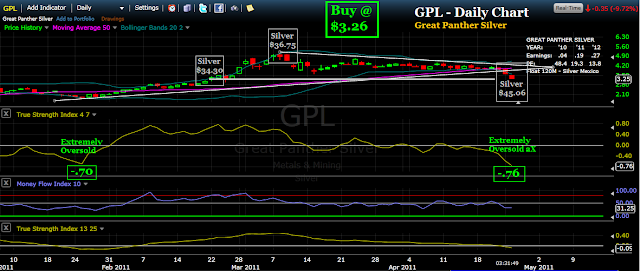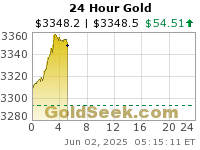I wasn't going to do this, but a reader asked me if I would mind making a chart to show how I used the True Strength Index (TSI) to buy and sell my Great Panther Silver (GPL) trade. You may recall that I sold my position from my TSI Trader account yesterday. What I did not tell you was that in another account I had doubled this position and had not sold any shares - well, not until today, that is.
*
 |
| Click on the chart to ENLARGE |
This is a 15 minute chart of Great Panther Silver (GPL). I bought GPL at $3.26 a couple of days ago using the TSI. Then this morning I used the indicator to sell the other half of my double position at $3.95.
*
Both signals were generated by a trend line break of the indicator. The buy signal occurred just below the ZERO crossover, which is ideal. The sell signal occurred just after a negative divergence had been made (higher high in price but lower TSI high).
*
Pretty kewl, huh?
(Shhhh.....just don't tell anyone how it works, OK?
Let' just keep this a well-guarded secret and use it to make lots of money!)

































![[Most Recent Quotes from www.kitco.com]](http://www.kitconet.com/images/quotes_special.gif)



